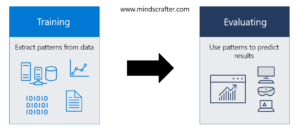
Machine Learning Model
How to Choose the Right Machine Learning Model for Your Data?
In today’s data-driven world, machine learning has become essential for businesses and organizations leveraging their data for insights and decision-making. However, with so many different machine learning models out there, it can take time to choose the right one for your specific data and use case. Whether you’re a seasoned data scientist or just starting out, selecting the most appropriate model can mean the difference between success and failure. This article will explore some essential tips and considerations to help you choose the suitable machine-learning model for your data. From understanding your data’s characteristics to evaluating the performance of different algorithms, we’ll cover everything you need to know to make an informed decision. So, whether you’re working on a classification, regression, or clustering problem, read on to discover how to select the best machine-learning model for your needs.
Understanding machine learning models:
Machine learning models are algorithms that learn patterns in data and use those patterns to make predictions or decisions. These models can be divided into three categories – supervised, unsupervised, and reinforcement learning.
Supervised learning is used for classification and regression problems, where the algorithm is trained on a labelled dataset. In unsupervised learning, the algorithm is trained on an unlabeled dataset and is used for clustering and dimensionality reduction problems. Reinforcement learning is used for decision-making problems, where the algorithm learns by interacting with an environment and receiving feedback in the form of rewards or penalties.
The importance of choosing the suitable machine learning model:
Choosing a suitable machine learning model is crucial for the success of any data-driven project. A poorly chosen model can lead to accurate predictions and good performance. On the other hand, a well-chosen model can lead to better insights, faster decision-making, and improved business outcomes.
To choose the suitable machine learning model, you need to understand the characteristics of your data, the problem you’re trying to solve, and the performance metrics you’re aiming for.
Types of machine learning models:
There are several types of machine learning models, each with its own strengths and weaknesses. Some of the most popular machine learning algorithms include linear regression, logistic regression, decision trees, and neural networks.
Linear regression is a supervised learning algorithm used for regression problems. It models the relationship between a dependent variable and one or more independent variables.
Logistic regression is a supervised learning algorithm used for classification problems. It models the probability of a binary outcome based on one or more independent variables.
Decision trees are a supervised learning algorithm used for classification and regression problems. They create a tree-like model of decisions and their possible consequences.
Neural networks are a type of supervised learning algorithm inspired by the structure and function of the human brain. Various problems utilize them, including image and speech recognition, natural language processing, and predictive analytics.
Factors to consider when choosing a machine learning model:
When selecting a machine learning model, several factors must be considered, including the size and type of your data and the kind of problem you’re trying to solve.
A simple model like linear regression may be sufficient if you have a small dataset. More complex models like neural networks may be necessary if you have a large dataset. The type of data you have, whether numerical, categorical, or text, will also influence your choice of model.
The problem you’re trying to solve, whether it’s a classification, regression, or clustering problem, will also impact your choice of model. For example, if you’re trying to predict the price of a house based on its features, you would use a regression model. If you’re trying to group customers based on their purchasing behaviors’, you would use a clustering model.
Evaluating machine learning models:
Once you’ve selected a set of candidate models, you must evaluate their performance. You can use several performance metrics, including accuracy, precision, recall, and F1 score.
Accuracy measures how often the model makes correct predictions. Precision measures the proportion of true positives among all optimistic predictions. Recall measures the proportion of true positives among all actual positives. F1 score is the harmonic mean of precision and recall.
To evaluate the performance of your models, you can use techniques like cross-validation and holdout validation. Cross-validation involves dividing the data into k-folds and training and testing the model on each fold. Holdout validation involves splitting the data into a training set and a test set and evaluating the model on the test set.
Tools for selecting and comparing machine learning models:
Several tools are available for selecting and comparing machine learning models, including sci-kit-learn, TensorFlow, and Keras. Scikit-learn is a Python library that provides a wide range of machine learning algorithms and tools for data preprocessing and model selection. TensorFlow and Keras are machine learning frameworks that allow you to build and train neural networks.
These tools provide various functions and algorithms for training and evaluating models, making comparing and choosing the best model for your data easier.
Best practices for selecting the suitable machine learning model:
To choose the suitable machine learning model, following some best practices is essential. First, start with a simple model and gradually increase complexity as needed. Second, choose a model that is appropriate for your data size and type. Third, evaluate the performance of your model using proper metrics and techniques. Fourth, consider the interpretability and complexity of your model. Finally, be willing to experiment with different models and methods.
Examples of real-world machine learning model selection:
To illustrate the importance of selecting a suitable machine-learning model, let’s look at some real-world examples. In the field of medical imaging, researchers use machine learning models to analyze images and detect diseases like cancer. Choosing a suitable model is crucial for accurate diagnosis and treatment.
In the field of finance, machine learning models are used to predict stock prices and identify fraudulent transactions. Choosing the suitable model can mean the difference between profit and loss.
In the field of natural language processing, machine-learning models are used to analyze and understand human language. Choosing a suitable model can lead to better chatbots, search engines, and voice assistants.
Conclusion:
Machine learning has become an essential tool for businesses and organizations, leveraging their data for insights and decision-making. Choosing a suitable machine learning model is crucial for the success of any data-driven project. By understanding the characteristics of your data, the problem you’re trying to solve, and the performance metrics you’re aiming for, you can select the best model for your needs. By following best practices and using tools like sci-kit-learn, TensorFlow, and Keras, you can ensure that your machine-learning models are accurate, efficient, and effective.
